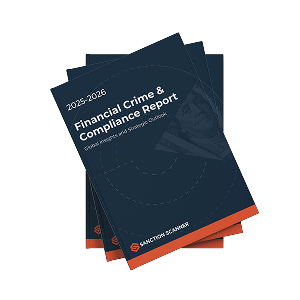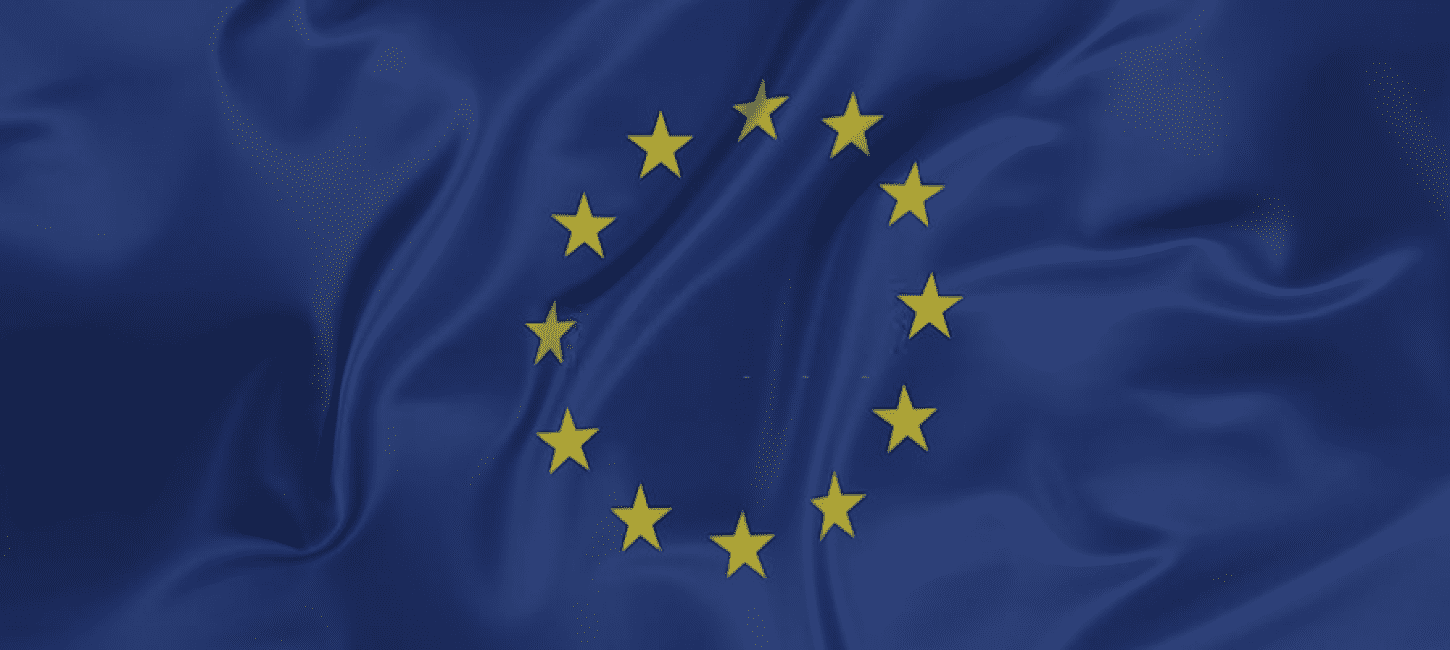What Is Country Risk Scoring?
Financial institutions, fintechs, and compliance teams use Country Risk Scoring to evaluate the risk of entities or individuals associated with a specific jurisdiction before proceeding with any further business.
It’s a key component of a Risk-Based Approach (RBA) in Anti-Money Laundering (AML), which is used in Customer Due Diligence (CDD), transaction monitoring, third-party risk management and sanctions screening, and cross-border payments
A country with weak AML/CFT laws or high corruption is more likely to be used for money laundering or sanctions evasion.
Why Is Country Risk Scoring Important in 2025?
Today, risks are no longer confined to borders, and this creates challenges for organizations trying to maintain compliance and mitigate exposure. If we need to mention these challenges, ongoing conflicts, shifting sanctions regimes, economic instability, and tightening regulatory frameworks are the ones that stand out.
There are several things you can do to protect your business, like detecting geographic risk exposure, avoiding onboarding customers from high-risk countries, ensuring compliance with FATF, EU, US, and local regulatory guidelines, and lastly, preventing violations of global sanctions lists. A robust country risk scoring model helps organizations to make informed decisions, reduce operational and reputational risks, while staying ahead of global compliance demands.
Top 50 High-Risk Countries in 2025 (Composite Risk Score)
| # | 🇳🇵 Country | FATF Status | Sanctioned? | Basel Score | TI CPI | Risk Level |
| 1 | 🇦🇫 Afghanistan | Grey List | Partial | 8.86 | 16 | Very High |
| 2 | 🇲🇲 Myanmar | Grey List | Partial | 8.62 | 20 | Very High |
| 3 | 🇸🇾 Syria | Black List | Yes (UN/US/EU) | 8.20 | 13 | Very High |
| 4 | 🇮🇷 Iran | Black List | Yes (UN/OFAC) | 7.90 | 24 | Very High |
| 5 | 🇻🇪 Venezuela | Partial | Yes (OFAC) | 7.80 | 14 | Very High |
| 6 | 🇷🇺 Russia | Removed (2023) | Yes (OFAC/EU) | 7.65 | 28 | High |
| 7 | 🇧🇾 Belarus | Not Assessed | Yes (EU/US) | 7.55 | 19 | High |
| 8 | 🇳🇬 Nigeria | Grey List | No | 7.45 | 25 | High |
| 9 | 🇱🇧 Lebanon | Grey List | No | 7.20 | 24 | High |
| 10 | 🇵🇰 Pakistan | Removed | No | 7.10 | 28 | High |
| 11 | 🇰🇵 North Korea | Black List | Yes (UN/US) | 8.90 | 12 | Very High |
| 12 | 🇷🇼 Rwanda | Compliant | No | 4.20 | 54 | Medium |
| 13 | 🇭🇳 Honduras | Grey List | No | 6.50 | 26 | High |
| 14 | 🇲🇩 Moldova | Grey List | Partial | 6.80 | 30 | High |
| 15 | 🇸🇦 Saudi Arabia | Compliant | No | 5.50 | 52 | Medium |
| 16 | 🇵🇭 Philippines | Grey List | No | 6.30 | 34 | High |
| 17 | 🇹🇷 Türkiye | Grey List | No | 6.40 | 27 | High |
| 18 | 🇧🇷 Brazil | Compliant | No | 5.80 | 38 | Medium |
| 19 | 🇲🇾 Malaysia | Compliant | No | 5.20 | 48 | Medium |
| 20 | 🇰🇿 Kazakhstan | Grey List | No | 6.75 | 29 | High |
| 21 | 🇮🇩 Indonesia | Compliant | No | 5.60 | 45 | Medium |
| 22 | 🇮🇶 Iraq | Partial | Yes (UN) | 7.30 | 23 | High |
| 23 | 🇱🇰 Sri Lanka | Grey List | No | 6.10 | 28 | High |
| 24 | 🇱🇾 Libya | Partial | Yes (UN/EU/US) | 7.85 | 18 | Very High |
| 25 | 🇨🇴 Colombia | Compliant | No | 5.40 | 37 | Medium |
| 26 | 🇨🇳 China | Compliant | No | 5.00 | 42 | Medium |
| 27 | 🇲🇦 Morocco | Compliant | No | 4.80 | 50 | Medium |
| 28 | 🇬🇭 Ghana | Grey List | No | 6.35 | 27 | High |
| 29 | 🇦🇷 Argentina | Compliant | No | 5.30 | 36 | Medium |
| 30 | 🇲🇽 Mexico | Compliant | No | 5.70 | 39 | Medium |
| 31 | 🇹🇩 Chad | Grey List | No | 6.90 | 22 | High |
| 32 | 🇪🇬 Egypt | Compliant | No | 5.25 | 41 | Medium |
| 33 | 🇱🇮 Liechtenstein | Compliant | No | 4.30 | 64 | Low |
| 34 | 🇨🇭 Switzerland | Compliant | No | 4.10 | 73 | Low |
| 35 | 🇩🇰 Denmark | Compliant | No | 3.90 | 85 | Low |
| 36 | 🇸🇪 Sweden | Compliant | No | 3.85 | 87 | Low |
| 37 | 🇳🇿 New Zealand | Compliant | No | 3.65 | 88 | Low |
| 38 | 🇨🇦 Canada | Compliant | No | 4.00 | 82 | Low |
| 39 | 🇺🇸 United States | Compliant | Yes (OFAC) | 4.50 | 80 | Medium |
| 40 | 🇯🇵 Japan | Compliant | No | 4.20 | 75 | Low |
| 41 | 🇬🇧 UK | Compliant | Yes (UK own) | 4.10 | 77 | Low |
| 42 | 🇫🇷 France | Compliant | No | 4.15 | 78 | Low |
| 43 | 🇩🇪 Germany | Compliant | No | 4.05 | 79 | Low |
| 44 | 🇦🇹 Austria | Compliant | No | 4.00 | 80 | Low |
| 45 | 🇳🇱 Netherlands | Compliant | No | 3.95 | 81 | Low |
| 46 | 🇧🇪 Belgium | Compliant | No | 3.90 | 82 | Low |
| 47 | 🇦🇺 Australia | Compliant | No | 3.85 | 83 | Low |
| 48 | 🇸🇬 Singapore | Compliant | No | 4.25 | 74 | Low |
| 49 | 🇰🇷 South Korea | Compliant | No | 4.10 | 76 | Low |
| 50 | 🇮🇱 Israel | Compliant | No | 4.15 | 78 | Low |
Methodology: Composite score based on FATF grey/black lists, sanction status, Basel AML index, and TI CPI 2024; ranking updated in Q1 2025.
What Metrics Are Used in Country Risk Scoring?
Country Risk Scoring determines the inherent risks of investing or conducting business in a specific country by using quantitative and qualitative metrics that provide a systematic approach to better understand the multifaceted factors that might influence a country’s reliability and predictability in global markets.
| Risk Category | Indicators | Sources |
| AML/CFT Framework | FATF compliance status, mutual evaluation outcomes | FATF, IMF, World Bank |
| Sanctions Risk | Presence on UN, OFAC, EU, or national sanction lists | OFAC, EU Council, UN Security Council |
| Corruption Risk | Transparency International Corruption Perceptions Index (CPI) | TI CPI Index |
| Political Stability | Government effectiveness, conflict, and regime change | World Bank WGI, Freedom House |
| Terrorism Financing Risk | Presence of FTFs, UN-listed terrorist entities | FATF, UN, U.S. State Department |
| Banking Transparency | Beneficial ownership disclosures, shell company activity | Basel AML Index, Open Ownership Register |
| Financial Secrecy | Offshore laws, UBO privacy, tax haven indicators | Tax Justice Network FSI, OECD reports |
| Crypto AML Regulation | VASP registration, KYC enforcement, DeFi oversight | Chainalysis, local regulators |
How to Build an Internal Country Risk Scoring Model?a
Creating an effective country risk scoring model requires a structured approach tailored to your business needs. First, you must identify relevant risk categories, such as AML compliance, sanctions, and corruption, based on your organization’s business and compliance requirements. Then, proceed to allocate weights to each risk category based on your business’s risk appetite. For example, you might need to prioritize sanctions (35%), then FATF Compliance (25%), and lastly Corruption Perception Index (15%). Also, you must use reliable and up-to-date data sources to calculate scores of risk profiles for each country by using Basel AML Index, FATF grey/blacklists, Sanctions Lists and Corruption Perception Index (CPI) rankings. Then divide scores into distinct risk categories to guide decision-making to levels of low risk, medium risk, and high risk. You must also update quarterly to reflect geopolitical and regulatory changes in order to immediately adjust to new sanctions.
Red Flags to Watch Based on Country Risk
Even with a robust scoring model, vigilance is key. Watch for red flags such as, clients registered in secrecy jurisdictions without clear business justification, high-volume transactions routed through sanctioned or grey-listed countries, use of intermediaries or correspondent banks based in high-risk zones, PEPs (Politically Exposed Persons) or UBOs (Ultimate Beneficial Owners) with ties to jurisdictions notorious for shell company abuse. By closely monitoring these indicators and leveraging a well-maintained risk scoring model, organizations can better navigate the complex web of regulatory requirements, minimize exposure, and maintain strong compliance practices in 2025 and beyond.
How Sanction Scanner Helps with Country Risk Scoring?
Sanction Scanner provides automated country risk intelligence, integrated into:
Name Screening & Onboarding: Auto-detects client geography and flags high-risk jurisdictions
Jurisdictional Risk Dashboard: Risk color-coding by country based on FATF, CPI, Basel, sanctions, and crypto indicators
Ongoing Monitoring: Alerts for FATF list changes, new sanctions, or political instability in client-linked countries
API Integration: Plug into onboarding or payment screening workflows to assess country-level risk in real time
FAQ's Blog Post
Country risk scoring is the process of assessing the money laundering and terrorist financing (ML/TF) risk associated with a specific country or jurisdiction.
It ensures that institutions apply appropriate levels of due diligence based on jurisdictional risks. This helps prevent exposure to high-risk countries and aligns with FATF Recommendations and regulatory expectations.
Key factors include: FATF listing (grey or black list) Corruption indices (e.g., Transparency International CPI) Presence of organized crime or terrorism financing Strength of local AML/CFT laws and enforcement Sanctions from the UN, EU, US (OFAC), etc. Political instability or weak rule of law
Regulators expect country risk to be part of a broader Customer Risk Assessment (CRA) framework. It should influence onboarding decisions, transaction monitoring thresholds, and Enhanced Due Diligence (EDD) triggers.
Common sources include: FATF mutual evaluations Basel AML Index Transparency International OFAC/EU/UN sanctions lists World Bank governance indicators Internal transaction exposure data
Country risk scoring is predictive and strategic, influencing due diligence levels. Sanctions screening is reactive and specific, identifying prohibited entities or individuals from official watchlists.
Not explicitly. However, FATF Recommendation 1 requires a risk-based approach to AML, and country risk is a core part of that model. Many regulators enforce it as an expectation.
At least annually, or immediately after key developments—such as FATF list updates, geopolitical events, or major sanctions announcements.


